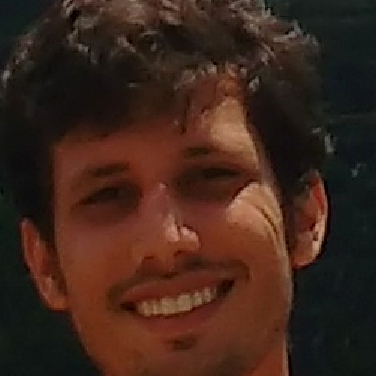Research activities
Research project/internship: Stratigraphic, Sedimentological and Geochemical Characterization of the lagoons: Vermelha and Salgada and the Espinho’s marsh (Part 1)
Acquisition and processing of seismic, GPR and GPS data, geomorphological and stratigraphic study of coastal environments related to the genesis of the lagoons Vermelha and Salgada and the Espinho’s marsh. (2011 – 2013)
PIBIC research project/internship: 3D Seismic data Compression using the Wavelet Transform (Continuation)
Advanced signal processing. Image compression in the wavelet transform domain. Implementation of MATLAB functions and later implementation of compression algorithms using FORTRAN 90 language for the compression of seismic signals, 2D and 3D, pre and post-stack. Study of codification and quantization techniques in order to achieve even better compression rates in the wavelet domain, as the SPIHT (Set partitioning in hierarchical trees). (2012 – 2014)
BSc — Sensitivity analysis of seismic trace inversion algorithms to different wavelets
(in Portuguese: Teste da sensibilidade dos algoritmos de inversão do traço a diversas ondaletas)
The estimation of the wavelet or seismic pulse, is a very important step in the processing and analysis of seismic data. Seismic inversion methods as narrow band, sparse spike and model based, require information about the wavelet so that the inversion solution, since it is not unique, may be restricted by comparing the seismic trace with the synthetic traces generated by the convolution of the model used in the inversion and the estimated wavelet. Besides helping in the seismic inversion, a good estimate of the wavelet enables an inverse filter with less uncertainty to be produced in a deterministic deconvolution step, while tying well logs, a better correlation between the seismic trace and the well is possible. The methods of wavelet estimation, for the most part, can be divided into two classes, depending on the use or not of the well log information, these are: statistical methods and deterministic methods. This work is aimed to test the sensitivity of seismic inversion algorithms to different wavelets. The estimation of wavelets is done using several methods, both statistical and deterministic. An analysis of estimated wavelet and the inversion results with different wavelet estimation methods allows to relate the uncertainty in the estimated wavelet with uncertainty in the result of the inversion. The inversion wavelet estimation methods were implemented in MATLAB. Synthetic data were used.
You can downloaded my monograph here:
MSc — Analysis of noise supression using the curvelet transform in post-stack seismic data
(in Portuguese: Análise da atenuação de ruídos via Transformada Curvelet em dados sísmicos pós-empilhamento)
The estimation of physical parameters from the seismic data is extremely sensitive to the presence of noise. In this way, great effort is dedicated to conditioning the data prior to applying inversion techniques. This has motivated the development of increasingly sophisticated methods. Several approaches exist, here we treat methodologies based on the Curvelet transform. Locally, curvelets can be seen as plane wave fronts. In addition, they lead to an optimal sparse representation of seismic events. Consequently, it is suitable for the treatment of seismic signals. In this work, performance of three methodologies for noise attenuation in 2D seismic sections, was analysed. The first involves hard thresholding and the other two, soft. Both controlled and actual data are considered: two terrestrial and one marine. As a quantitative criterion, two techniques of acoustic inversion of the trace are adopted, since consistent models are only estimated when as amplitudes of the signal with properly recovered. The tests demonstrated that all three methods are capable of attenuating noise and recovering the uncorrupted signal amplitudes, which, consequenty, lead to good estimates upon inversion.
You can downloaded my dissertation here:
PhD — Experimental characterization and modelling of electromagnetic waves generated by seismoelectric conversion at porous media interfaces.
Seismoelectric conversion in saturated porous media due to a mechanical disturbance exists in two forms, the first is a wavefield which is strictly bounded to the seismic wave while the other is an electromagnetic (EM) wavefield created due to changes in physical properties, at geological interfaces, and that propagates independently of the seismic waves. Due to the sensitivity of the latter to lithology changes it can be applied to near-surface investigation complementarily to reflection seismology. However a throughout quantitative understanding of the EM wave generated at interfaces has not yet been attained, consequently impeding its widespread use. Seeking to outcome this drawback, this project aims to quantify the effect of a couple of physical parameters (e.g., porosity, salinity and permeability) and layer thicknesses using experiments and numerical modelling based on a recognized theoretical approach. The first goal of the thesis is to design a reproducible experiment that allows the study of seismoelectric conversions of both kinds and in parallel to adapt an existing code to model the experiment in a precise way. On one hand it involves the study of the acquisition equipment in order to ensure the best signal-to-noise ratio in measurements, while on the other hand it implies a complete understanding of the underlaying theory before carrying on the necessary adaptations in the code. For the second part a series of measurements in both an homogeneous and a layered media will be conducted and the numerical modelling will be confronted with experiments to understand how close (or how far) are the theoretical predictions from the experimental data. At last measurements changing the layer properties and thicknesses will be performed in order to shed some ligth into how the EM conversions at interfaces will be influenced by these parameters.
